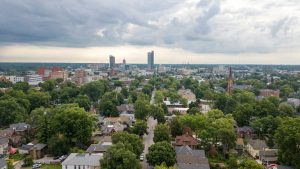Housing Evolution Through the Decades: A Journey of Architectural Transformation
The world of housing has gone through incredible transformations over the past few decades. From humble one-room dwellings to towering skyscrapers, the evolution of housing has been nothing short of mind-boggling. This journey of architectural transformation has not only shaped the way we live but has also played a crucial role in the progress and development of our societies. In this article, we take a deep dive into the history of housing and explore the revolutionary changes that have taken place over the decades.
The Early Years: Simple Yet Functional
In the early days, housing was all about functionality. The main focus was to provide shelter from the elements and create a space that was livable and sustainable. In ancient times, humans lived in caves, tents, and makeshift shelters made from natural materials such as mud, stone, and wood. As civilizations began to develop, so did the concept of housing. Ancient Egypt, for example, is known for its magnificent pyramids, which served as tombs for the pharaohs.
The industrial revolution brought about significant changes in the housing landscape. With advancements in engineering and technology, cities began to expand, and a new class of workers emerged. This led to the development of apartment buildings and tenement housing, which provided housing for the working class in cities.
The Mid-20th Century: A Shift Towards Modernism
As we entered the mid-20th century, housing once again underwent a major transformation. This time, the focus was on modernism, a design movement that rejected traditional architecture and instead embraced minimalism and functionality. One of the most significant shifts during this period was the rise of suburban living. With the advent of the automobile, the middle class began to move away from cities and into the suburbs, where they could have more space and privacy.
The post-war period also saw the development of mass-produced, prefabricated homes. These homes were built in factories and could be assembled on-site, making them affordable and efficient. They allowed many families to become homeowners for the first time, thus paving the way for suburban sprawl.
The Present: A Focus on Sustainability and Technology
Today, housing has evolved to become more than just a shelter. It is now a reflection of our lifestyle, values, and aspirations. The focus has shifted towards sustainable design and the use of technology to create smarter and more efficient homes. With the growing concern for the environment, architects and designers are incorporating eco-friendly materials and energy-efficient features into their designs.
Add to that the integration of technology into our homes. From smart thermostats to voice-activated assistants, technology has transformed the way we interact with our homes. Home automation has made it possible to control various aspects of our homes, such as lighting, security, and entertainment, with just a tap on our smartphones.
The Future: Where Will Housing Take Us?
So, what does the future hold for housing? As cities continue to expand and the global population grows, there will be a need for more sustainable and affordable housing options. We can expect to see more innovative designs and the use of alternative building materials, such as recycled plastic and 3D printing. And with the rise of remote work, the concept of co-living and shared spaces is gaining popularity.
Another exciting prospect for the future of housing is the development of smart cities. With the use of technology, cities can become more connected and efficient, providing its residents with a better quality of life.
In Conclusion
The evolution of housing over the decades has been nothing short of remarkable. From simple shelters to complex smart homes, housing has continuously evolved to meet the changing needs and demands of society. As we look towards the future, one thing is certain – housing will continue to transform, shaping our lives and the world around us.










